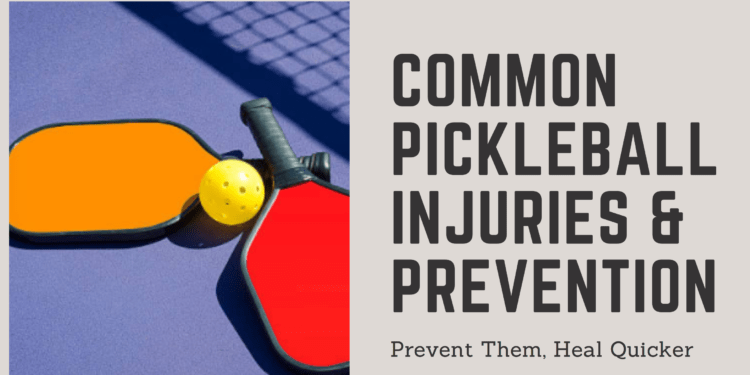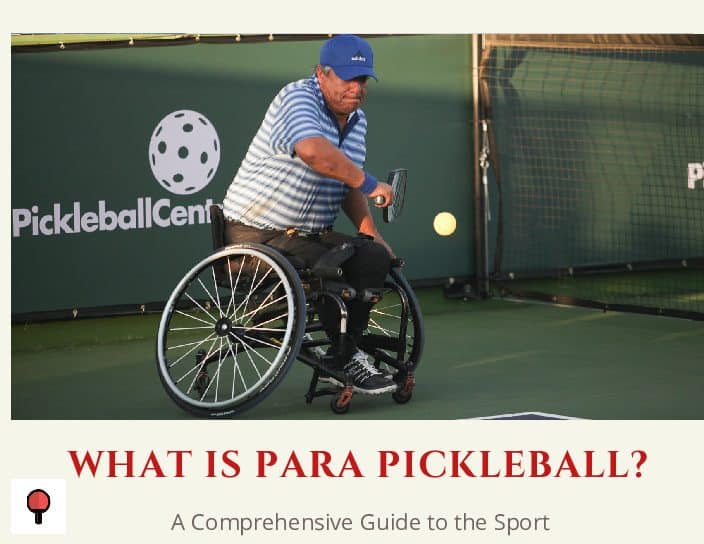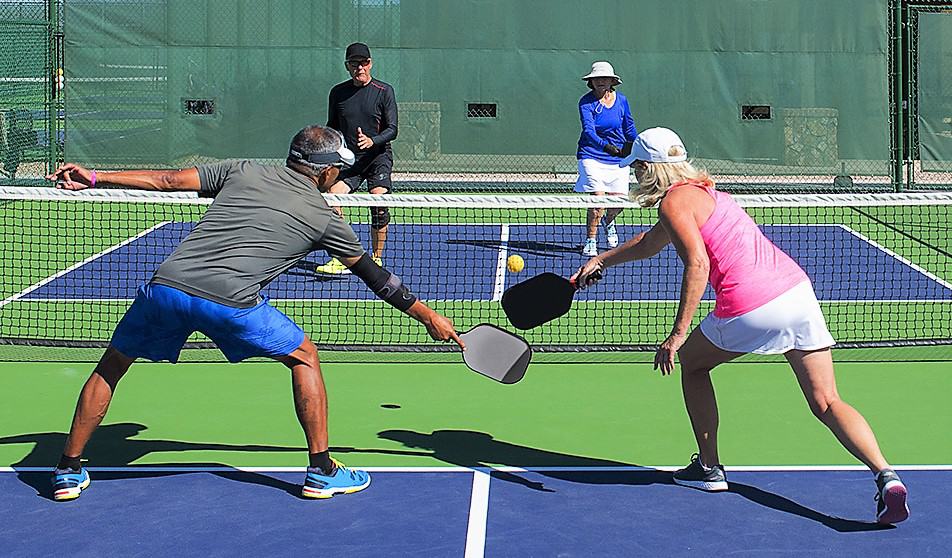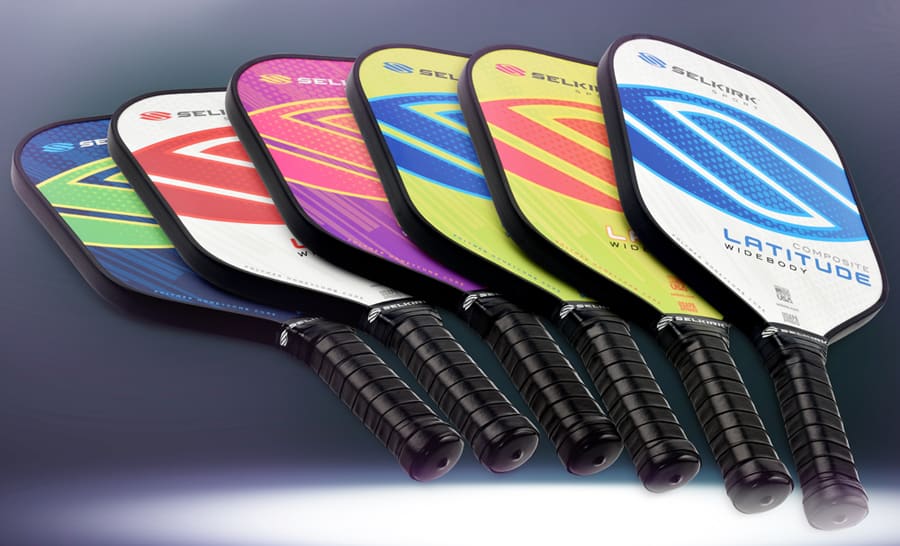Pickleball has gained popularity as of late. And with any sport no matter if it is popular or not, comes the risk of getting an injury. Now, it doesn’t matter if you are new to the sport or a seasoned player, it’s likely you have sustained at least one injury in the process. But, do not worry because there are ways to prevent these injuries and recover more quickly! This blog post will cover exactly that – the most common pickleball injuries, the injury rules you need to follow, as well as the process of recovery and prevention.
Common Pickleball Injuries
Every sport has its own set of injuries, and pickleball is no exception. They are becoming even more common as the game grows in popularity. Adults are mainly the target demographic for pickleball because it’s a sport that’s easy and fun to play…especially with retirees looking to stay active.
However, many senior players are at an increased risk of injury when playing pickleball. Novices and newbies should focus on avoiding injuries by learning the game before jumping in unprepared. This is why we decided to give you all the information needed about Pickleball injuries.
1. Ankle Strain (Stretching or Slight Tear of a Ligament):
The most common injury in pickleball is a sprain to the ligament that runs along the outside of your foot. It’s usually caused by stopping suddenly or changing direction quickly.
2. Achilles Tendon Strain (Stop and Go, or Change of Direction):
This type of strain mimics an ankle strain but occurs higher up on your leg at the tendon connecting your calf muscle to your heel bone. This condition can be avoided through proper conditioning; strengthening muscles around the area will help lessen the chance of future injuries.
3. Heel Strain:
Another overuse injury seen among pickleball players who play for long periods without taking breaks from activity. Symptoms include pain on top of the ball joint behind the big toe with swelling after playing and stiffness when walking.
4.Knee Sprain (Often Sprain of Medial Collateral Ligament):
This is a common injury among pickleball players and is caused by over-extending or twisting of the knee, which can happen during an intense burst to reach a ball. Prevention includes stretching before playing as well as warming up with light jogging beforehand.
5.Hamstring Strain:
this type of strain occurs when you overextend your leg while reaching for a bad in front of you – it may be due to muscle fatigue from improper conditioning. Symptoms include hamstring pain that starts at the back of your thigh near the pelvis bone (the femur) and travels down the outside part of your shinbone (your tibia).
6.Wrist Fracture:
One cause for wrist fracture is falling backward onto an outstretched arm. Treatment for this includes ice and a sling.
Pickleball Injury Rules
Proper Foot Wear
The most common pickleball injuries experienced in the knee or ankle area can often have been avoided by wearing proper shoes. Many people play pickleball without considering what type of shoes they wear. They may grab whatever pair is nearby and head onto the court without thinking twice about it. However, if you are serious about safe pickleball, the first equipment purchase should be a quality pair of shoes.
One of the best shoes would be court shoes. These shoes are designed specifically for pickleball and can be bought from a variety of different online stores or other sporting goods retailers. Court shoes have soles that will not slip on the court surface. They also provide arch support, which is important to prevent sprains in your ankles, feet, and legs.
Another option would be running shoes with studs on them that will grip onto most surfaces well without slipping around too much while you change directions quickly during play. Of course, there are many brands available so feel free to choose any shoe you like best as long as they meet these requirements and keep your safety top-of-mind when it comes to pickleball footwear!
Protective Eye Gear
It is important to wear protective eye gear when playing pickleball, especially on a court with glass. Safety goggles or glasses will shield your eyes from any flying balls and protect you against injury. For best protection, the eyewear should also be shatterproof so that if one of those stray shots bounces off the ground before it hits you in the face (instead) it won’t break through your safety eyewear!
Pickleball Clothing
There are many different types of clothing designed specifically for picklé players such as t-shirts and shorts made out of moisture-wicking materials and breathable fabrics that provide comfort during play while keeping you cool. Make sure to pick up some of these clothes to protect yourself from the sun and keep you comfortable.
Conditioning
Injuries are a common problem for players of Pickleball. Yoga exercises like planking, push-ups, and squats can help you prevent common injuries that would keep one from playing the game.
One more great tip is to use your diaphragm when you work out the different muscle groups. However, note that this power comes from your legs and body rotation.
To avoid injury, you should try to learn how to fall so that your body rolls with the impact. If you extend your arm to catch yourself, it could result in a broken wrist or arm. A great exercise is to lay on your back and rollover. From there, work your way up by standing in one easy motion.
Good players bend at their knees, coil, and uncoil their upper body. Using your arms to hit the ball helps you collapse from your waist instead of rotating with the core muscle group in the chest and back. Good balance is also important, which improves readiness for that second shot or third wave.
Pickleball can help you leave the court in good spirits (leave feeling happy) if you avoid playing too hard, resting when needed, and staying hydrated. I learned these lessons the hard way: after getting dizzy and feeling light-headed while playing for much too long one day, I had to stop because it was dangerous. Now I always have a water bottle and snack bar with me every time I play pickleball.
The Process of Recovery
The recovery process depends on the type of injury. For example, if you sprain your ankle and are in a lot of pain, take an over-the-counter anti-inflammatory medication like ibuprofen or acetaminophen to reduce swelling and inflammation while icing for 20 minutes three times daily. You can also use ice packs that wrap around your joint to decrease blood flow and relieve pressure. A physical therapist may be able to teach you exercises to strengthen the injured muscle group so it doesn’t get weaker during healing (get weak).
Prevention
Products to Consider to Prevent Injuries
As we’ve mentioned before, the most important piece of pickleball equipment to prevent injury is your shoes. Additionally, stabilization for injuries that you may have incurred in the past can be useful and therefore an ankle support sleeve should be used.
The last topic to cover in my article on preventing pickleball injury is stretching. A good stretch before playing is vitally important to help your muscles and tendons be ready for play – a bad idea would be showing up, going right out, and then playing without stretching.
Stretching before and after games is an important strategy to prevent common pickleball injuries, like a pulled muscle. Consider investing in a good stretching band to use either at home or on the court for pre-game warmups and cooldowns.
Products You Can Use to Heal Faster From an Injury
When you have a pickleball injury, it is important to get treatment as soon as possible to avoid or lessen the severity of an injury.
Inflammatory Medicines
The first step in treating any type of pickleball-related injury should be rest and recovery from pain. In most cases, this will involve ice packs followed by anti-inflammatory medicines like ibuprofen (Advil).
If your symptoms don’t improve after three days, see a medical professional for additional care options. You’ll want to know what’s wrong with you so that they can provide proper treatment – if it turns out that you need surgery because there are torn ligaments then do not hesitate: go ahead and schedule the operation right away!
Back Brace
If you’ve been playing pickleball and have experienced a back injury, we recommend using a back brace. This will help provide support for your spine while it heals from the injury that caused the pain in the first place.
Back braces are also good to wear if you’re experiencing lower-back spasms or sciatica (pain along nerve pathways).
Heat/Ice Pack
It’s best to alternate between heat and ice packs when healing an injury after picking up a new sport like pickleball because both of these therapeutic treatments offer different benefits: Heat helps increase circulation as well as reduce swelling whereas cold reduces inflammation and numbs pain over time.
Electric Pulse Massager
If you’re dealing with an injury that feels a lot like or is classified as chronic muscle pain then it’s best to use an electric pulse massager.
Massagers can be used on the affected area and they offer relief from tension in muscles which often leads to fatigue and painful soreness.
What Else You Can Do?
If you’re not sure where to start when it comes to the healing process then explore some of these options:
– Taping up an injury with a sports tape. This can help reduce pain and inflammation by applying pressure onto certain parts of your body that need relief.
– Addressing other symptoms like headaches, nausea, or vomiting if they occur as well (often due to injuries).
– Consider using ice therapy for any sprains or strains which will provide quicker recovery time than heat packs and won’t cause any additional damage in the long run.
Another tip is to avoid pickles while playing because this could lead to muscle cramps from dehydration; stretch before play; use the proper technique – rotate hips and swing with the shoulder; and make sure you are wearing proper attire such as a shirt, shorts, socks, shoes.
Fundamentals to Avoid Injuries
Make Sure to Warm Up
Make sure to stretch your muscles and do a light warm-up before pickleball and also to stretch after play. If you are done playing for the day, make time to cool down with some stretching. This will help prevent any soreness or stiffness from setting in overnight.
Try New Activities If Pain Persists
It is important not to ignore signs of pain that continue long after an injury has occurred as this could lead to serious problems later on if left untreated. If initial methods don’t work, consider hiring a therapist who specializes in sports injuries because they know what movements aggravate the injury instead of guessing which ones may be best like someone else might have experience doing.
Wear Proper Clothes and Equipment
It’s best to wear clothes that have as little restriction on the injured area. This includes wearing a wide and comfortable shoe, tight socks, or anything else with elastic bands which will constrict circulation in an already sensitive area.
Make sure you are playing pickleball with appropriate equipment such as athletic shoes under your feet and not just sandals if it is extremely hot out so you can avoid blisters from forming while also protecting yourself from injury at the same time.
People who play pickleball know all about injuries but often forget what they need to do when their turn comes around because it feels like there was never any warning ahead of time before they had done something wrong themselves!
Listen to Your Body
This is a no-brainer but it needs to be said; when something doesn’t feel right, someone isn’t sure if they should get up or not, and they need to stop.
There are always going to be pickleball players who will do what others don’t want them to because of the competitive nature that many people have – even in an amateur sport! However, there’s nothing wrong with sitting out for a game or two while your injury heals so you can come back stronger than ever before.
If you’re playing on hard courts where you know some other player has taken off their shoes at the end of the play, make sure yours stay tied tightly during games as well. It may seem like overkill, but it can prevent the common pickleball injuries listed above.
Now it’s time to put on our best pickleball gear — both physically and mentally – so we can get back to playing this fun sport





